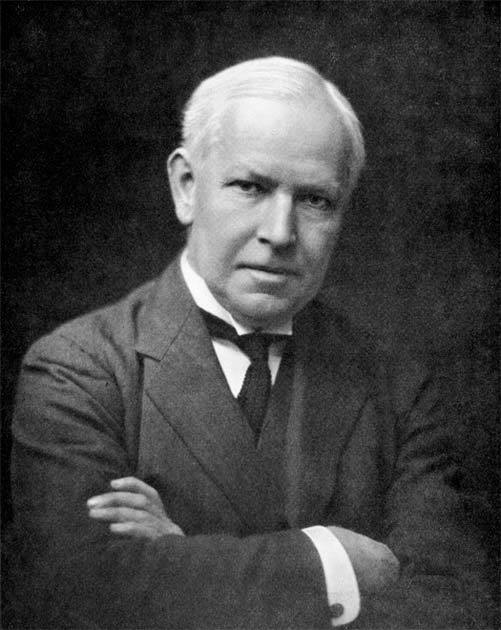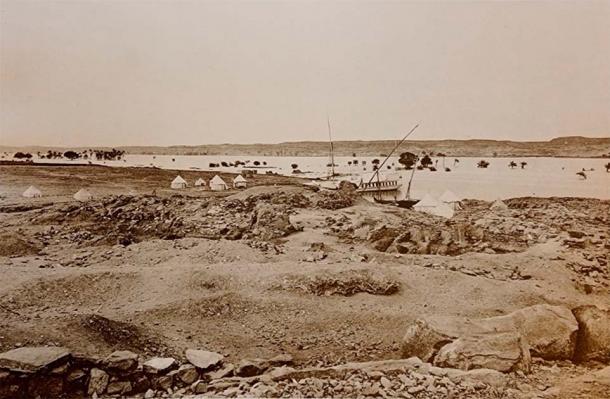A researcher combing through the archives at the University of Cambridge in the United Kingdom discovered a set of 115-year-old documents that were believed to have been permanently lost eight decades ago. They have revealed a ream of evidence from a little-known cemetery in Lower Nubia, providing a deluge of data on ancient Nubians.

University of Manchester biomedical Egyptologist Jenny Metcalfe recently visited the archives, to search for information about an ancient African people known as the Nubians, who lived in southern Egypt and northern Sudan as long ago as the fifth millennium BC. While checking through records from excavations that took place in the early 20th century, she found a set of what she refers to as “recording cards,” which provided detailed descriptions of human remains unearthed in ancient cemeteries in Lower Nubia (another name for southern Egypt and northern Sudan) by British archaeologists in 1908.

“The recording cards are pre-printed cards designed by Grafton Elliot Smith to help record the individuals they found,” Dr. Metcalfe told Newsweek. “They have boxes for recording details such as site, historical age, age and sex, long bone and skull measurements, teeth present and any evidence of illness or trauma, such as broken bones.”
- Burial Sites Show How Nubians and Egyptians Integrated Thousands of Years Ago
- 2,600-Year-Old Statue Identified as Vengeful Kush Ruler

The First Investigations of Nubia Rediscovered
Grafton Eliot Smith was an esteemed University of Manchester anatomist who was involved with the very first excavations to ever take place in that part of the world, which continued from 1907 until 1911.
Dr. Metcalfe’s explorations of the University of Cambridge archives were undertaken in connection with a book she is currently writing about those excavations. Entitled The Archaeological Survey of Nubia Season 2 (1908-9) Report on the Human Remains, this book will highlight some of the amazing discoveries of the archaeologists, anthropologists and affiliated researchers who discovered ancient cemeteries and other ruins and artifacts left behind thousands of years ago by the legendary Nubians.
The newly recovered recording cards will have a featured place in the book, as they reveal many fascinating details who the ancient Nubian people were and how they lived.
The Nubian Excavations through the Eyes of Grafton Eliot Smith
During the 1907-1911 excavations, a multidisciplinary team of experts from several British institutions unearthed more than 150 Nubian cemeteries containing approximately 20,000 graves, 7,000 of which still held their original skeletal remains. Burial goods of many different types were also recovered, and these excavations dramatically expanded academic knowledge about the ancient Nubian civilization and its culture.
“The oldest cemeteries excavated in this survey belong to the ‘A-group’ Nubian population, which began around 3,800 BC, although there is evidence of human occupation in the region before this,” Dr. Metcalfe stated.

After joining the expedition during the second excavation season, anatomists Grafton Eliot Smith and Douglas Derry invested an extraordinary amount of time and effort examining the ancient skeletons, writing down descriptions of everything they saw. The detailed data they collected was written down by hand on index-like-cards, and represented official documentation of the expedition’s findings.
“They [the cards] allowed the anatomists to both study individuals and compare those individuals to build up a picture of the Nubian communities,” she explained.
While searching through data collected during this second archaeological season, Dr. Metcalfe was shocked but delighted when she found the recording cards, which were alleged to have disappeared during the chaos associated with the WWII era. Presumed lost, they had apparently been hidden in plain sight all along, tucked in among other excavation records that hadn’t been examined much in quite some time.
Unfortunately, Metcalfe was not able to find any recording cards from seasons three and four, even though they were apparently created. But the collection of season two cards appears to be relatively complete, and most will be presented and discussed in-depth in Metcalfe’s forthcoming book.
On the Trail of the Ancient Nubians, Africa’s Forgotten Pioneer Culture
The Nubians first emerged in the archaeological and historical record as a united people with a distinct culture nearly 5,000 years ago, in the Nile River Valley of southern Egypt and northern Sudan. While often overlooked because of their proximity to the people ancient Egypt, the Nubians built one of Africa’s earliest advanced civilizations, the Kingdom of Kush (or Kushite Empire). They shared power in the region with the ancient Egyptian pharaonic culture, and were often at war with their neighbors to the north as part of an ongoing struggle for regional supremacy.
The Kingdom of Kush actually conquered the Egyptians in 744 BC, and it was the Nubians who ruled over a fully united Egypt during the 25th Dynasty, which lasted from 744 to 650 BC (the Egyptians regained their independence in the 26th Dynasty).
Eventually Egyptian military power eclipsed that of the Kingdom of Kush, and the Nubian lands were annexed by the Egyptians in the third century BC. They remained under Egyptian control (and indirectly under first Greek and then Roman control) for six centuries, before finally regaining their independence.
The Nubians converted to Christianity during the mid-first millennium AD, and the people lived in various Christian Nubian kingdoms until around the year 1500, when the Nubians began gradually shifting their spiritual allegiance to Islam. This conversion was ultimately completed, and the Nubians have remained faithful to Islam ever since.
The current Nubian population numbers somewhere between three and five million, with the majority living in Egypt, although several hundred thousand also live in Sudan. They are the direct descendants of the ancient Nubians whose remains were excavated more than 100 years ago, and modern-day Nubians who track developments in archaeology closely are likely to be quite excited by the recovery of documents that reveal a wealth of information about those early 20th century discoveries.
If not for the excavations that took place in Lower Nubia between 1907 and 1911, most of the ruins, artifacts and skeletal remains left behind by the ancient Nubians would have been lost. Construction of the Aswan Low Dam between 1907 and 1912 completely flooded a large section of Lower Nubia, and scientists were in a race against time to learn as much as they could before the Nubian cemeteries were submerged forever.
Now some of the most important data they recovered has been rediscovered, giving researchers new insights into a truly ancient society.
“This discovery adds significantly to our understanding of life in ancient Nubia, providing information about communities previously assumed lost,” Dr. Metcalf said, “… they tell us about how old people in Nubia were when they died, the ways in which they were prepared for burial and they give us some idea about how large these individual communities were at different points in history. This is the first time it has been possible to reconstruct this information for these particular cemetery populations.”
Top image: Old photo of one of the tombs in the Nubian cemetery discovered in 1908. Source: University of Manchester
By Nathan Falde



